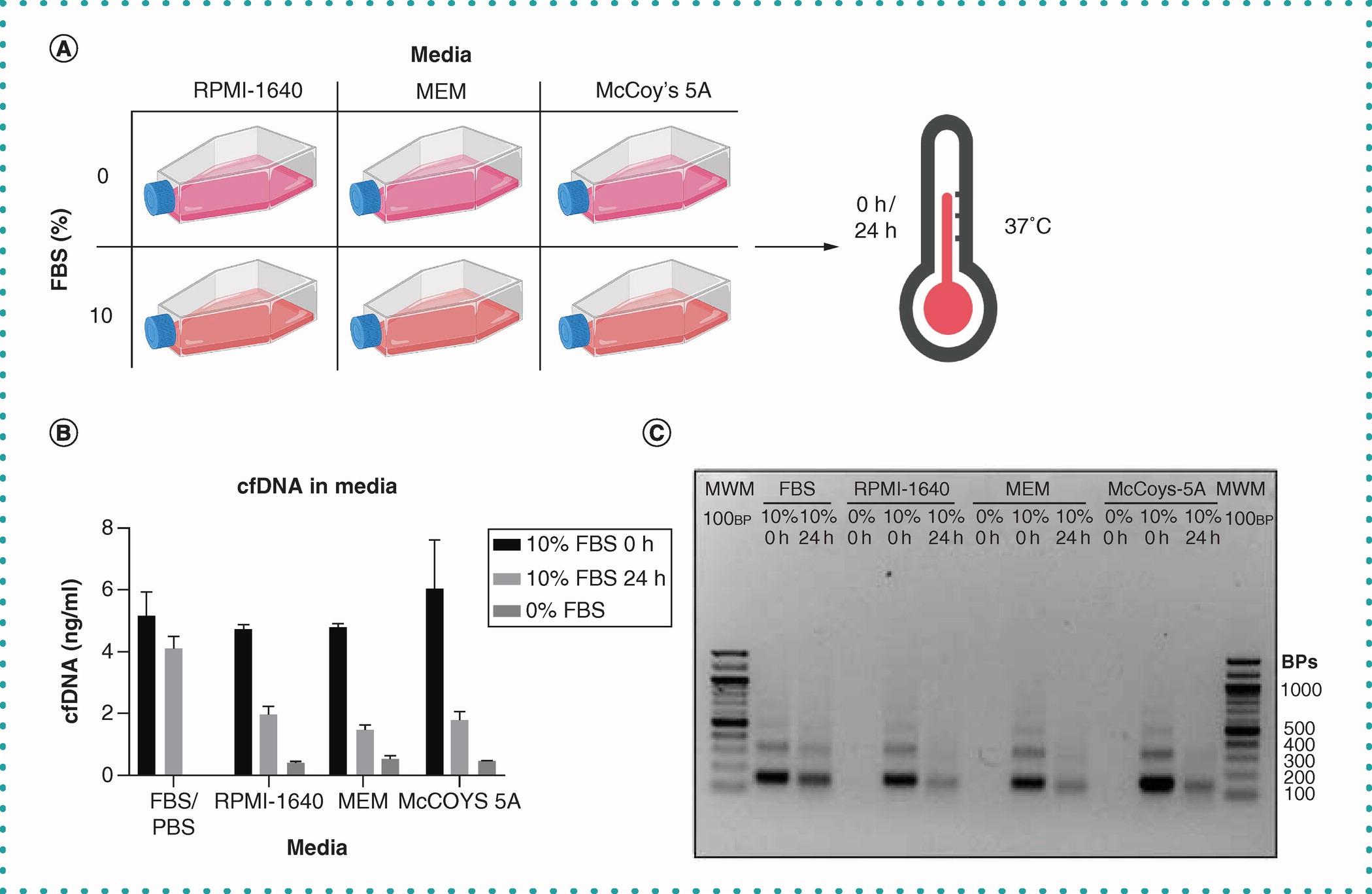Content #1
Content #1
Content #1
Cell-free DNA (cfDNA) research has become widespread due to the potential it offers in clinical settings. Testing cell-free fetal DNA has become a common method of non-invasive prenatal diagnosis, while circulating tumor and mitochondrial DNA are potential biomarkers for liquid biopsy. cfDNA is thought to exist as fragmented, double-stranded DNA often ∼167 bp in length, and is present in various body fluids, including blood, urine, cerebrospinal fluid, and saliva. Though primarily studied in humans, cfDNA is known to occur in other mammals. cfDNA research commonly involves its isolation from cell conditioned media, allowing controlled observation and increased availability of cfDNA from cultured cells. One factor which has not been well investigated is the potential cfDNA contribution of fetal bovine serum (FBS) to cell culture media.
In their new BioTechniques article, Werner, Warton, and Ford present a detailed examination of the DNA contributed by FBS during in vitro scenarios like those used in many cfDNA studies. Their experiments aimed to show how endogenous cfDNA in FBS could affect measurements of cfDNA in vitro. Three commercial cell culture media were supplemented with 10% FBS and analyzed for the presence of cfDNA. cfDNA levels from medium were also compared between flasks with and without cultures of three commonly used ovarian cancer cell lines (OVCAR-4, TYK-nu, and SKOV-3) in media optimized for their growth (RPMI-1640, MEM, and McCoy’s 5A, respectively). To show how bovine cfDNA in FBS could affect detection of the cfDNA from the cells of interest, Werner, Warton, and Ford then determined the amount and size of cfDNA present in each sample by gel electrophoresis using Biotium’s sensitive GelRed® Nucleic Acid Gel Stain. Fluorometric DNA quantitation was then used to confirm electrophoresis results. The team detected significant amounts of DNA from FBS in all supplemented media that also appeared to have contributed a major portion of ∼167 bp DNA (Figure 1). They also determined that media contained different cfDNA levels after incubation with different cancer cells, and FBS-derived cfDNA appeared to account for the bulk of low-molecular-weight cfDNA following short-term culture. Medium from cells cultured in FBS-free media contained mostly large DNA fragments, suggesting that cfDNA with the typical 167-bp size was contributed by FBS and that the primary mechanisms of cfDNA release and fragmentation might not be accurately reproduced in vitro. In conclusion, the authors suggest that future cfDNA researchers should heed these results and control for the presence of bovine DNA during such studies.

Biotium offers a wide variety of reagents and kits for DNA quantitation for use with fluorometers, including Qubit®, or for agarose gels. Our sensitive GelRed® Nucleic Acid Gel Stain offers a safer and more sensitive alternative than ethidium bromide. For precise fluorescence-based quantitation of purified dsDNA or RNA, our AccuClear®, AccuGreen™, and AccuBlue® kits offer diverse options. Our new EMBER™ Ultra RNA Gel Kit is a sensitive and easy-to-use pre-coated agarose, allowing RNA to be evaluated on a regular agarose gel.
Full Citation
Werner, B., Warton, K., & Ford, C. E. Endogenous cell-free DNA in fetal bovine serum introduces artifacts to in vitro cell-free DNA models. BioTechniques, 73(5), 219-226 (2022). https://doi.org/10.2144/btn-2022-0040
Qubit is a registered trademark of Thermo Fisher Scientific.